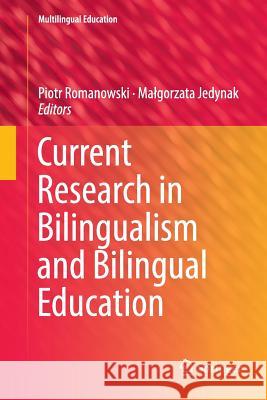Current Research in Bilingualism and Bilingual Education » książka
topmenu
Current Research in Bilingualism and Bilingual Education
ISBN-13: 9783030064259 / Angielski / Miękka / 2019 / 241 str.
Kategorie:
Kategorie BISAC:
Wydawca:
Springer
Seria wydawnicza:
Język:
Angielski
ISBN-13:
9783030064259
Rok wydania:
2019
Wydanie:
Softcover Repri
Numer serii:
000450976
Ilość stron:
241
Waga:
0.37 kg
Wymiary:
23.39 x 15.6 x 1.4
Oprawa:
Miękka
Wolumenów:
01
Dodatkowe informacje:
Wydanie ilustrowane











